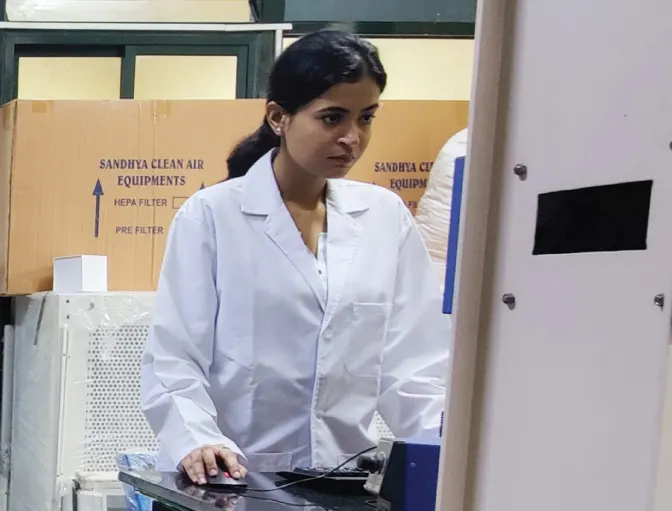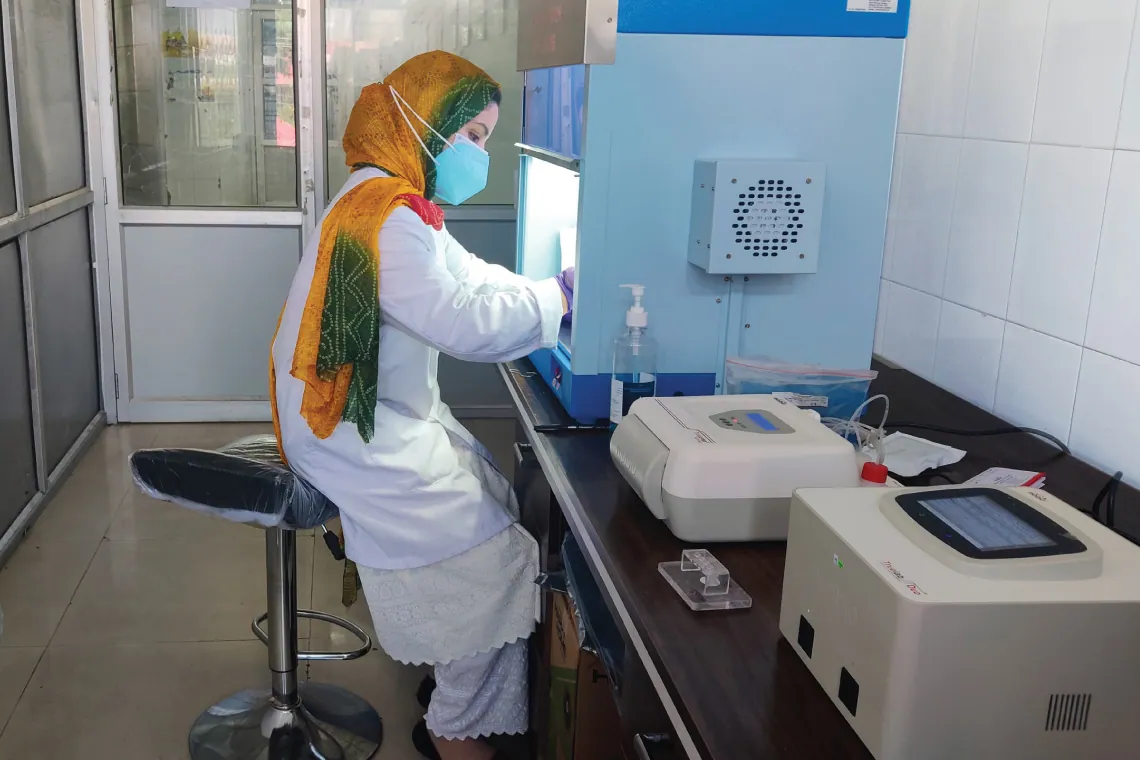Equipping the med armoury
India Health Fund is at the forefront in the fight against antimicrobial resistance, a phenomenon at fever pitch in the country and around the world
Patient M had cancer. Over a period of months, he received carefully regulated doses of chemotherapy, followed by radiation therapy. As he neared the end of his treatment, Patient M picked up a bacterial infection. That stumped his doctors as he failed to respond to antibiotics. Patient M survived cancer but succumbed to sepsis that could not be treated.
Patient B had a bacterial urinary-tract infection (UTI). Her doctor put her on several courses of increasingly strong antibiotics as the infection continued to rage. It took several weeks and much diagnostics before the doctor pinpointed a drug that would be effective for her. Patient B managed to recover.
The culprits in the cases of both Patient M and Patient B were superbugs, strains of bacteria that are resistant to the tools of modern medicine, such as antibiotics. And superbugs are more than just prevalent in India.
Nature magazine calls India a stronghold of superbugs because of the spread of antimicrobial resistance (AMR). Shorn of jargon, AMR means that the common drugs we use to combat pathogens that cause infectious diseases may soon cease to be effective.
A 2023 Lancet article included some frightening data from a study conducted in the country. It stated that scientists registered as high a level as 87% resistance to commonly used broad-spectrum antibiotics. “It is one of the scariest scenarios for a clinician — to be faced with an infection against which there is no cure,” says Dr Abdul Ghafur, an infectious disease specialist with Apollo Hospital, Chennai.
Superbugs spreading
The NDM-1 (for New Delhi metallo-ß-lactamase-1) enzyme makes bacteria resistant to most antibiotics; first detected in India in 2008, it has since spread to 70 countries.
- WHO has reported resistance rates as high as 42% in E coli against cephalosporin-based antibiotics, and 35% in Staphylococcus aureus against methicillin-based antibiotics.
- The Organization for Economic Cooperation and Development estimates that resistance to last-resort antibiotics will double by 2035 as compared with 2005 levels.
IHF to the fore
The criticality of the superbugs-and-AMR issue was what prompted the Tata Trusts to consider it an extremely serious healthcare concern. That led to India Health Fund (IHF) focusing on AMR.
IHF was established by the Trusts in 2017 and its objectives are well-defined. “Our mandate is to derisk the development and enable the scaling up of solutions that can address infectious diseases,” says Madhav Joshi, IHF’s chief executive.
As a nonprofit on a mission to contain India’s infectious diseases burden, IHF considers AMR more than a red flag. The Fund has been at work on AMR since 2023, stepping up to back innovators and biotech startups — among them Molbio and HealSeq — in bridging the considerable gap between lab and market for these enterprises.
The aim is to encourage the development of science-led innovations in, for instance, a range of diagnostics that can help clinicians identify which strain of microorganism is the cause of an infection and which drugs are likely to succeed. These tools will be the frontline defence against AMR (see New weaponry).
Such diagnostic solutions will be an important weapon in the much-needed armoury to counter AMR. The challenge lies in AMR’s complexity, though its root cause is well-known. Experts blame the worrying rise in drug-resistant pathogens partly on the overuse of antibiotics, which are easily procured from pharmacies without prescriptions and freely consumed by people with no understanding of medicine.
It’s not just in humans; antibiotics used in animal husbandry — to improve yields in the farming of cattle, poultry and shrimp — add to the AMR burden as more drug-resistant organisms circulate in the community. These bugs can then spread to humans through our food chain and through effluents and sewage. The result: a high burden of AMR in humans and poor health outcomes as antibiotics fail.
Countries like India, which have to cope with issues ranging from sanitation and poverty to overcrowding and limited medical resources, carry a high burden of AMR.
With India home to a quarter of the world’s tuberculosis patients, the AMR upsurge has fuelled a nightmare situation. Drug-resistant tuberculosis, spurred by AMR, has been rising by more than 20% each year, putting to serious test the government’s mission to eliminate the disease.
Although tuberculosis may be a bigger concern in lower-income countries, the AMR alarm bells are ringing around the world. For example, the Western world is seeing a rise in drug-resistant UTIs, a common malady that affects at least half of all women and one in 10 men. According to one study, almost 80% of bacteria that cause UTIs are resistant to at least two commonly used antibiotics. Notably, the World Health Organization has declared AMR among the top 10 public health threats globally. A Lancet study termed AMR a global health crisis, with millions of deaths linked to drug-resistant infections each year.
Misuse and overuse
The approach to tackling AMR is as complicated as the nature of the problem. The most obvious one is to address the source of the issue, the root cause being the misuse and overuse of antibiotics.
“India has effective policies that require certain medicines to be sold by prescription. This is already being enforced for some drugs, such as sedatives. We need to implement it for antibiotics as well,” says Dr Ghafur.
A more nuanced solution includes stepping up AMR stewardship, where more stakeholders advocate against patient abuse of prescription drugs and make doctors and pharmacists aware of the inherent danger. Advocacy needs to be backed by data, which means surveillance mechanisms to track the prevalence of drug-resistant pathogens.
The Council of Scientific & Industrial Research (CSIR) is among the Indian agencies active in the fight against AMR. Immunologist and biotechnologist Dr Vinay Nandicoori heads CSIR’s Centre for Cellular and Molecular Biology (CCMB). The centre is working on ways to identify the presence of AMR genes in pathogens by tracking wastewater samples. In this context, an alarming surveillance study has revealed that 20% of tuberculosis genomes are already drug-resistant.

New weaponry
The reality of medicine is that the developed world is more focused on noncommunicable diseases such as cancer, diabetes and heart disease rather than infectious conditions. India Health Fund focuses on challenges that plague lower- and middle-income countries.
Molbio and HealSeq are two standout solution providers in this space. Goa-based Molbio’s Truenat portable diagnostic tool was a game changer for India’s testing centres during the Covid pandemic, bringing down the diagnosis time from days to minutes.
The Truenat platform is a versatile molecular diagnostic tool that can be adapted to detect a wide range of infectious diseases. It is currently in use for the detection of Mycobacterium tuberculosis and specific resistance detection of specific antibiotic classes such as carbapenems.
Now available globally, the Truenat multi-disease device puts the power of molecular diagnostics in the hands of clinicians tackling infectious diseases in developing nations. It addresses respiratory diseases such as tuberculosis, vector-borne diseases such as malaria, dengue and chikungunya, and has been endorsed by the World Health Organization.
The HealSeq story started in a lab at the Indian Institute of Science, Bengaluru. Today HealSeq is a deep-tech company that offers affordable diagnostic platforms. AMR diagnostics are a part of its portfolio, with the company offering a first-of-its-kind test for the early detection of drug-resistant tuberculosis.
“The rise in AMR means India needs to find new solutions to emerging and reemerging diseases,” says Dr Nandicoori. This could be new diagnostic tools, novel molecules that can replace or reinforce the array of antibiotics in use, or novel treatment approaches. “Innovation is critical and innovators in this space need to be supported,” says Dr Nandicoori. “Too many startups in biotech fall into the valley of death, the gap between lab and market.” IHF’s efforts are engineered to ensure that does not happen.
IHF supports innovators in the lab-to-patient pathway in multiple ways: with funding, access to networks of investors and collaborators, handholding through the maze of regulations for clinical trials, and even at the final go-to-market stage. “Our role is to support the maturing of innovations so that India has a viable pipeline of solutions to tackle AMR,” says Mr Joshi.
IHF is concentrating on diagnostics for primary care. “We want to help physicians take the right decisions quickly,” adds Mr Joshi. “Currently, doctors need lab culture results to identify which drugs the pathogen is resistant to, but this can take two-three days. When faced with a patient already severely ill, a doctor needs information within 15-30 minutes.”
Dr Ghafur, a clinician who sees cases of AMR in patients almost every day, concurs. “In government hospitals, doctors see 100 patients in three hours. They need rapid tools to help them with the right course of treatment. The hope for the future lies in ideas advanced by startups willing to take bold steps.”
One of the bold is Dr Reety Arora, head of research at CrisprBits, an Indian startup that uses gene-editing technology to develop solutions for precision medicine. The CrisprBits solution is called PathCrisp, a diagnostic tool that tests common pathogens for genes that indicate resistance to typical antibiotics.
Testing times
“We have further developed PathCrisp so that it doesn’t need a cold room; it works at room temperatures and on blood samples,” says Dr Arora. The good news for PathCrisp and patients is that it will soon be tested in hospitals.
For startups like CrisprBits, the path from lab to real life can be tortuous. “Getting the science right is just one aspect,” says Dr Arora. “Biotech startups face multiple challenges: getting blood samples for study, licences for technologies, approvals for clinical trials, the maze of regulatory requirements and, not least, funding.”
Mr Joshi underscores the significance of the Tata Trusts’ philanthropic capital in all of this. “There is a realisation that we may be nearing a tipping point when it comes to AMR,” he says. “There are new strains of pathogens in the environment, superbugs that are multidrug resistant. What do we do when the drugs we have stop working? We need solutions. That’s why the Trusts have chosen to be a catalyst in this space.”
